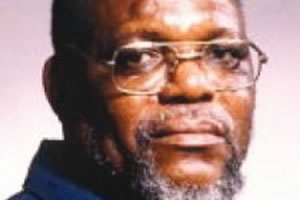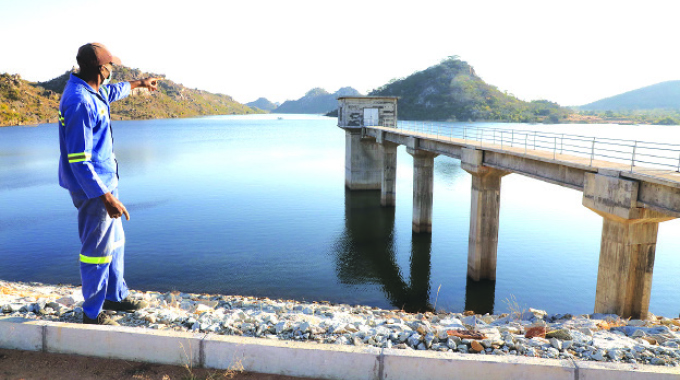Spare a thought for Hwange
Reflections Isdore Guvamombe
Day after day of cloudless skies, the fierce sun sucks moisture from the landscape, baking the earth into a dusty grey, while the withered grass is left tinder dry and as brittle as straw. The sun-burnt savannah and Kalahari desert sand is left shimmering like a mirage on the horizon, yet wildlife frolics from every corner, like ghostly figures.
On entering the gate at the Main Camp, fresh game dung juxtaposed with stunted, sparsely populated bush shrubbery and rock outcrops give valuable clues to what happens in Zimbabwe’s undisputed wilderness — the perfect theatre of the jungle called Hwange National Park.
Just after the entrance, from Hwange Safari Lodge, to the right is a roadside water hole. There buffaloes huddle and moo in formidable herds, flap their ears, noses up and challengingly spatter the ground with dung before boastfully moving off the road.
A coterie of dead trees stand akimbo, and in defiant silence, as if to say, we once played our part.
Flies hover above dotted animal droppings, a stark declaration that they are part of the ecological cycle of this last vestige of wilderness. The sun bakes and bakes and bakes soil into cakes.
Confident in the camouflage of their stripes zebras pose, heads aligned, stripes merging and flowing in motion, displaying their magnificent God-given colours, forgetting for a while that predators might be stalking them.
A pair of giraffes race along the road — all legs and neck — yet looking elegant in their gangling awkwardness. Their heads tower majestically above the ordinary graze-line that looks like a schoolboy’s fresh haircut.
Protective elephants guard their young under the shed of a huge tree adjacent to the waterhole.
The grey mounds of flesh pose and move their flabby bodies lackadaisically. Once in a while they see the threat from the vehicle.
Another grey family is on the road and makes my car look like a dwarf under the armpit of a giant colossus. Slowly, tentatively, they grudgingly move off the road.
Baboons squabble noisily among themselves; yet a concerned one preens the glossy coat of another, like a doctor attending to a patient. The “patient” lies on the back, one leg up while the “doctor” picks on the problem. God’s grandeur, I thought.
Towards the Main Camp offices a kudu bull appears on the road, its corkscrew horns shining like polished iron amour.
It majestically stands more a moment before shooting off like a bullet — head aligned backwards, making the horns look like a spear in reverse.
Taking a cue from the kudu’s flight, a herd of impala takes off on spindly legs, using too much energy but not going far away. Amazing God’s grandeur, I thought.
Hwange National Park is the largest game reserve in Zimbabwe, founded around 1928 and occupying 14 650 square kilometres, of a vast swathe in the north-western part of the country.
It has a tremendous selection of wildlife with over 100 species of mammals and nearly 400 bird species.
The elephant population, in particular, is the world’s largest concentration and a marvel to watch yet at some point one feels the park is getting overpopulated with the jumbos. But that does not justify poaching.
Hwange has three distinctive locations and administrative offices situated at Robins, Sinamatella and Main Camp. The main camp is the largest at 10 600 sq km.
The area around the Main Camp has numerous pans and pumped waterholes, where game come to drink much to the delight of the tourist.
The main camp borders for 140 km with Tsholotsho Communal Areas Management Programme for Indigenous Resources (Campfire) area, which has been porous to the poachers, originally for the pot but are now being recruited for commercial elephant poaching, using the deadly cyanide poison.
We need to spare a thought for Hwange after the cruel death of 64 elephants, through poisoning.
For the tourist, there are self-catering lodges, cottages, chalets, a camping and caravan site.
There is a choice of one or two bedrooms that are refrigerated and boast of furnished kitchens, bathrooms and verandas.
Ngweshla Pan has a loop road that gives a pleasant day drive, while Nyamandlovu Platform is the prime game viewing area, supported by a pumped water hole.
For an exceptional African sunset view, the Dom waterhole is a perfect place.
Sinamatella, a corruption of the name Chinamatira, a local shrub that characteristically sticks to one’s clothes when brushed against, was established in 1966, approximately 120km from the Main Camp.
It offers several exclusive camps like Bambusi, 24km away, with four lodges but no electricity, Lukosi Camp — 11km away — which can accommodate 10 people and is only open from November to April.
There are undeveloped camping sites at Lukosi, Vhikani, Rhino Bar, Salt Springs and Tshakabika.
Mandavu, Masuma, Detema Dams provide perfect game viewing opportunities. Then there is Robins Camp, about 60km from Sinamatella and 140km from the Main Camp.
Mr Harold Robins, a farmer, donated Robins Camp to the State in 1939. The camp has lodges, chalets and camping sites.
There are also exclusive camp sites like Isilwane Lodge, Natwich Camp and Deka Camp.
One of Hwange National Park’s exclusive tourist attractions is moonlight game viewing, around the full moon and this is exclusive to the Main Camp.
This is why many people say travelling through Hwange National Park gives you an insight of what much of the interior of Africa might have been like more than 150 years ago.
There is no place in the world where the jungle is a theatre of activities under the blistering heat, where hundreds of artificial waterholes provide the arena.
That is Hwange for us and for the world.
Let us spare a thought for Hwange National Park, the last vestige of wildlife. With such amazing flora and fauna there is no doubt that more effort needs to be put in protecting the world’s biggest last natural vestige of wildlife — Hwange National Park.
The ecological disaster that recently hit Hwange, where 64 elephants were poisoned should be nipped in the bud; otherwise the whole vestige will be wiped out. Spare a thought for Hwange National Park.








Comments